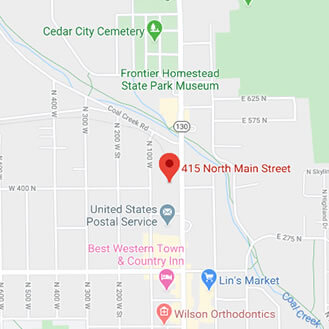March 24th, 2020

At Webster Orthodontics, we know good dental health requires only a few minutes a day. We thought we’d provide some practical advice on how to improve your or your child’s smile between your adjustment visits with Dr. Webster.
Start by brushing your teeth twice a day. Proper brushing techniques are an essential part of maintaining good oral health during your orthodontic treatment, as well as preventing gum disease. More care and time are needed to adequately brush your teeth when you are wearing braces. Brushing daily helps remove decay-causing plaque from tooth surfaces. Please consult Dr. Webster if you would like us to review brushing techniques with you or your child. The use of a mechanical toothbrush such as a Sonicare or Oral B can aid in removing plaque around braces. Flossing daily will also prevent plaque to build up between the teeth and prevent stains between your teeth. Research has shown the bacteria of gum disease has been linked to coronary artery disease, stroke, diabetes and memory loss. Lastly, we encourage you to throw away old toothbrushes and replace them every 2 or 3 months, or after an illness.
We hope this helps! If you have any further questions about any of these tips, please contact Webster Orthodontics or ask your general dentist during your next scheduled visit! Or, ask us on Facebook!
March 17th, 2020

Folks with big smiles may actually live longer than those who don’t, according to a March 2010 study at Michigan’s Wayne State University. Dr. Webster has known for quite some time that positive emotion has been linked to both physical and mental health, but researchers at the university did something quite interesting: they looked at photos of 230 ball-players who began their careers in baseball prior to 1950 and studied their smile intensity (ranging from big smile, no smile or partial smile). The players' smile ratings were compared with data from deaths that occurred from 2006 through 2009. The researchers then took into account other factors that impact life longevity, including body mass index, career length and even college attendance.
The results? Researchers found that players who weren't smiling in the photos died at the average age of 72.9 years. Players with partial smiles lived to be 75. Those with big smiles, however, lived on average to be 79.9 years old.
The take-away from the new study? Smile now, smile often and you might just live longer! Have you been perfecting your smile by visiting Webster Orthodontics on a regular basis? If not, give us a call!
March 10th, 2020
If you ever sustain damage to your braces and need to call Webster Orthodontics, we can help you more effectively if you can tell us exactly which piece is in trouble! Here’s a handy diagram and corresponding list of all the parts that make up your braces.

Elastic Tie: Tiny rubber band that fits around the bracket to hold the archwire in place.
Archwire: The main wire that acts as a track to guide the teeth along. It's changed periodically throughout treatment, as teeth move to their new positions.
Loop in Archwire: Frequently used for closing space left by an extraction. Many archwires don't have a loop.
Bracket: Small attachment that holds the archwire in place. Most often, a bracket is cemented directly onto the tooth's surface, eliminating the need for a band.
Headgear Tube: Round, hollow attachment on the back bands. The inner bow of the headgear fits into it.
Coil Spring: Fits between brackets and over archwire to open space between teeth.
Tie Wire: Fine wire that is twisted around the bracket to hold the archwire in place.
Band: A thin ring of metal fitted around a tooth and cemented in place. The band provides a way to attach the brackets to the tooth.
Hook: Welded or removable arm to which elastics (rubber bands) are attached.
Elastic (Rubber Band): Small rubber band that is hooked between different points on the appliance to provide pressure to move the teeth.
Hope this helps! Give us a call if you have any questions!
March 3rd, 2020

Some people wonder why orthodontist Dr. Mark Webster and our team work tirelessly to give our patients straight teeth? Of course it’s nice to have a smile full of evenly-aligned teeth, but did you know that straightening your teeth at Webster Orthodontics can keep them healthier? Straight teeth lead to better oral hygiene, increasing your chances of keeping your own natural teeth for a lifetime!
Straight teeth are less prone to decay, because they collect less plaque—the sticky colorless substance that forms on our teeth and leads to tooth decay; and they are easier to keep clean!
If you’re wondering whether your teeth might cause problems because they are out of alignment, please give us a call to set up a consultation. Dr. Webster can help you decide whether or not you will benefit from orthodontic treatment.






